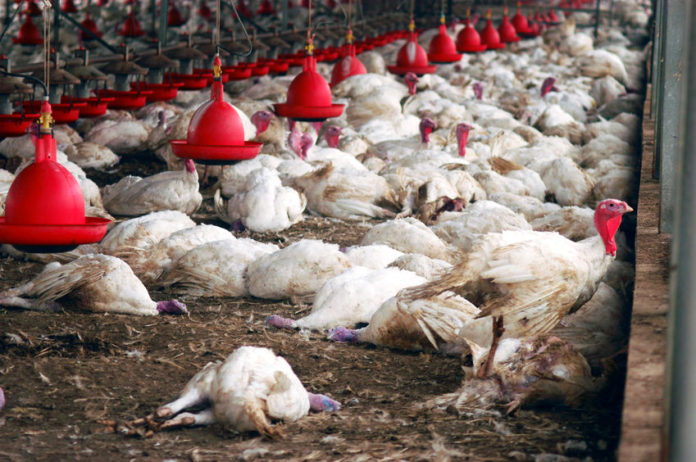What is bird flu?
The question is simple, and we have all heard or read a thing or two on this infamous “bird flu”. For those who might not define it well, bird flu is an avian influenza virus. This means that it usually affects the birds only. There are many strains of the avian influenza virus, but only three have managed to infect us, humans. Among the strains that are harmful to humans one of them is known as the H5N1 which was seen in Hong Kong in 1997, then later in 2003. Another severe strain, the H7N9, was detected in Shanghai in 2013. H7N9 since its discovery has infected over 1,200 people in China, with a fatality rate of 40% and claiming 86 lives in 2017 alone. As a means of preventing the spread of the virus, birds have been killed across the globe in millions. The virus spreads mainly from poultry to humans, rather than from humans to humans. The World Health Organization confirmed that by the beginning of 2017, five waves of H7N9 infections had occurred in China with over 460 people confirmed to be infected by the avian virus since October. Symptoms of the disease include a cough, fever, sore throat and in some cases pneumonia. A vaccine for the virus has not yet been engineered, but antiviral drugs are used to manage the disease.
China is the country most afflicted by the virus. The virus has a very high probability of becoming a global pandemic and the necessary measures to prevent the spread of the deadly infection to the US have not yet been taken, according to experts. WHO has assured people that the current cases occurring in China have a low probability of turning into a global epidemic because human to human transmission is unsustainable.
In current outbreak season, there has been some resistance to the neuraminidase inhibitors category of drugs (which Oseltamivir or Tamiflu falls in). Tamiflu is one of the major drugs that are used to manage human diseases from the avian influenza virus. The approximate number of people who have developed symptoms from the H7N9 virus and also are resistant to Tamiflu is about 7%. These patients had been treated before with antivirals leading to the conclusion that they developed resistance in their bodies and they were not infected with a resistant type.
“There is no evidence to recommend changes in clinical management,” Dr. Wenqing Zhang said. He is the principal of WHO’s Global Influenza Program. Therefore, the WHO recommended the treatment to continue as it is.
An Imperial College London virologist, Dr. Mike Skinner, mentioned that the development of resistance in some of the patients doesn’t imply that the risk of transmission from man to man increases. In actuality, he added that some genetic mutation might have occurred limiting the transmissibility of the virus.
Research also revealed that viruses obtained from three current H7N9 human infections, mutated to have an altered genetic makeup that makes their disease progression faster in birds, hence more fatal in the avian species.
Dr. Skinner revealed the brighter side of the situation when he said that the mutations of the virus observed in humans could help in controlling and containing the virus. The birds which are infected would be simple to detect because their symptoms are more severe compared to those infected by the common strain. The severe symptoms would assist the poultry farmers and sellers to pinpoint the virus in its formative stages and quarantine the birds before the virus has time to spread.
Dr. Skinner said that during the past outbreaks, “It was hard to know whether it was in your birds.” “But they are beginning to see highly pathogenic viruses in the bird markets,” emphasizing the importance of the necessity to close down markets and separate the birds carefully.
The rapid rise in H7N9 cases in China and H5N8 outbreaks that affect birds only and continues to rage in Europe forced the WHO to step in and look into them. Dr. Zhang together with other experts from WHO on Wednesday presented a report on their latest discoveries.
Another expert, Dr. Yuelong Shu, concluded that current epidemic “is past its peak already,” because the new cases of infections are declining. Dr. Yuelong is the director of the WHO Collaborating Centre for Reference and Research on Influenza at the Chinese Center for Disease Control and Prevention.
The avian species continue to be affected by the H5 family of the influenza virus. The WHO has recorded outbreaks that have exceeded 1000 in number, said Dr. Jackie Katz. She is the director of the WHO Collaborating Center for the Surveillance, Epidemiology, and Control of Influenza at the US Center for Disease Control and Prevention.
Since June, Europe is the most affected by the virus outbreak other cases have been noted in the Middle East, Asia and Africa.
The infections first arrived in the Baltics in Europe and extended down. “Its’s effectively migration-driven,” said Dr. Skinner. “Most of the infections seen here are driven by migrating birds.”
The preventative measures recommended by the WHO to control the spread of the disease include regular hand washing, reducing contact with live birds and avoiding poultry farms, covering the nose and mouth when near poultry and thorough cooking of meat.
Experts in the United States have said if the H7N9 becomes a global epidemic the country is not yet ready to handle it. Ron Klain, the former Ebola expert, mentioned to Vox that, “America has long been unprepared for a dangerous pandemic, but the risks are especially high under President Trump.”
The President has not named the nominees for the position of the leader of the Centers for Disease Control and Prevention. He is also yet to appoint the chair of two other crucial agencies that would fight a global pandemic, the Office of the Assistant Secretary for Preparedness and Response or the USAID.
There is also the probability that Trump might cut 12% of CDC earnings by repealing the Affordable Care Act. Trump has also reduced global health funding by reinstituting the global gag rule.
The Influenza virus may fail to pose a threat now, but another epidemic might arise and cause problems for the country.
The Zika virus and Ebola virus caused a global panic when they broke out. Ebola virus which is a viral hemorrhagic fever that is fatal and affected mostly the West African region with some American and European cases of infection arising. Most of its management involved preventive measures to control spread as there was definitive treatment once one was symptomatic.
The recent Zika epidemic affected mostly the South American region. It was not as fatal as Ebola, but it caused microcephaly among newborn babies. Microcephaly is a condition when a child is born with a smaller than average head size because of the failure of the development of the fetal brain. Mosquito bites were the primary mode of transmission. The US CDC cautioned pregnant women from traveling to affected areas. A vaccine for Zika is yet to be discovered.




